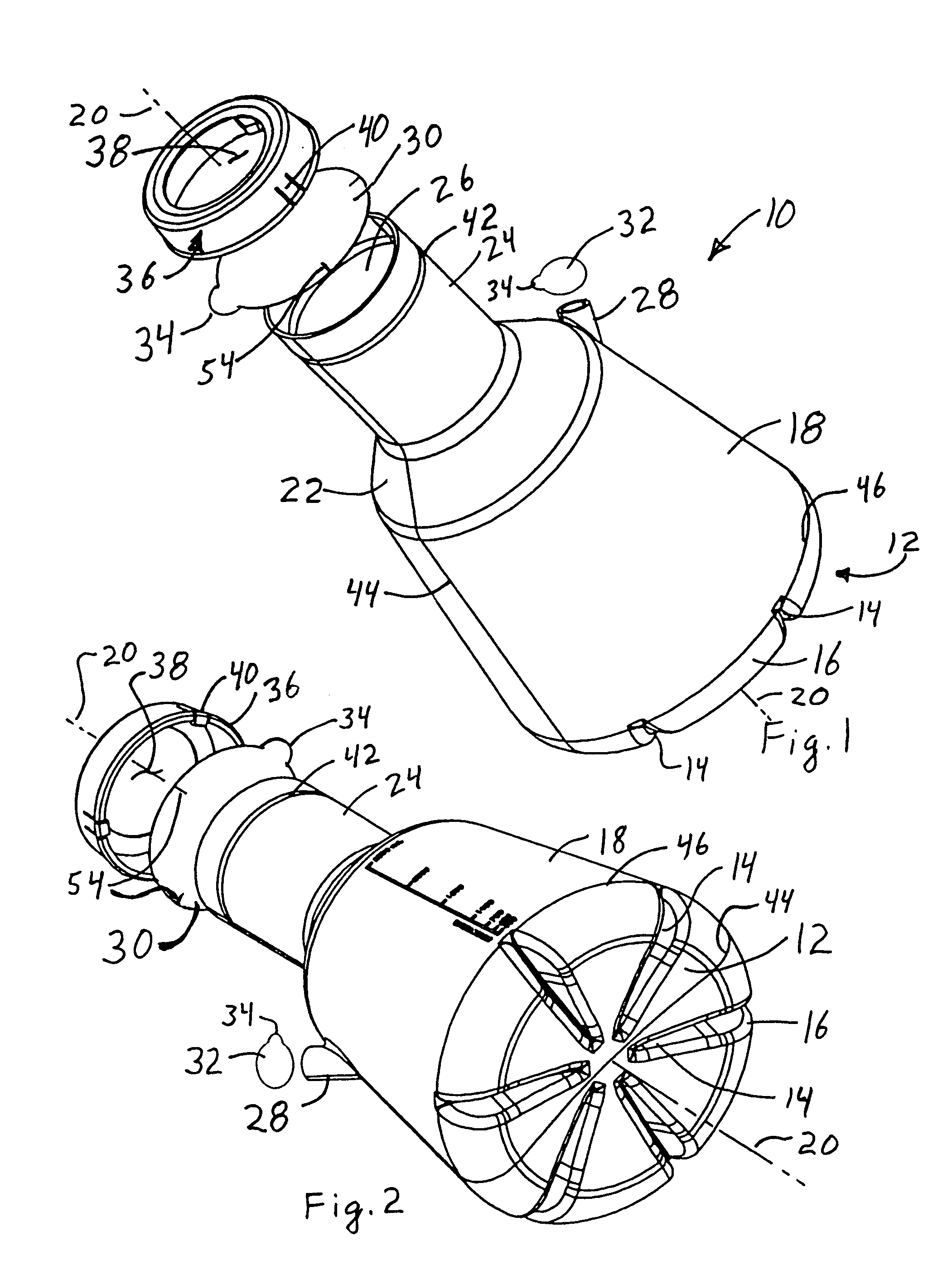Fermentation flask for cultivating microorganisms
a technology of fertilization flask and microorganism, which is applied in the direction of transportation and packaging, rigid containers, after-treatment of biomass, etc., can solve the problems of high cost of making tuna flasks that must be reused, contamination of samples cultivated in reused flasks, and use of baffles, so as to reduce costs and contamination, increase the agitation of biological materials, and increase the growth of materials.
- Summary
- Abstract
- Description
- Claims
- Application Information
AI Technical Summary
Benefits of technology
Problems solved by technology
Method used
Image
Examples
Embodiment Construction
[0016]Referring to FIGS. 1–5, a container 10 is provided having a bottom 12 with a plurality of baffles 14 formed in the bottom. The bottom 12 has a curved peripheral corner 16 which joins sidewall 18 that angle inward toward longitudinal axis 20 to form a conical structure. A transition area 22 joins the sidewalls to an elongated neck 24 having an opening 26 in a distal end of the neck. An access port 28 is formed in the side of the container, advantageously in either the transition area 22 or sidewall 18. A first filter 30 covers the opening and a second filter 32 optionally covers the access port, each filter having a finger tab 34 to facilitate handling and removal of the filter. A cap 36 optionally holds the first filter 30 onto the neck 24. The cap 36 preferably comprises an annular flange with an opening 38 about as large as the opening 26 in the neck 24. Resilient locking tabs 40 are cut or formed in the flange of the cap 36, with distal ends of the locking tabs 40 engaging ...
PUM
| Property | Measurement | Unit |
|---|---|---|
| included angle | aaaaa | aaaaa |
| included angle | aaaaa | aaaaa |
| height | aaaaa | aaaaa |
Abstract
Description
Claims
Application Information
 Login to View More
Login to View More - R&D
- Intellectual Property
- Life Sciences
- Materials
- Tech Scout
- Unparalleled Data Quality
- Higher Quality Content
- 60% Fewer Hallucinations
Browse by: Latest US Patents, China's latest patents, Technical Efficacy Thesaurus, Application Domain, Technology Topic, Popular Technical Reports.
© 2025 PatSnap. All rights reserved.Legal|Privacy policy|Modern Slavery Act Transparency Statement|Sitemap|About US| Contact US: help@patsnap.com



